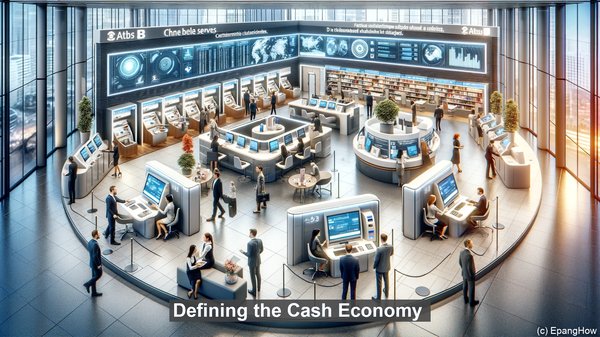Introduction: The Evolving Financial Landscape
Hello everyone! As the world progresses, so does the way we handle money. Gone are the days when cash was king. Today, we have a diverse range of financial systems, each with its own set of advantages and challenges. In this video, we’ll be exploring the contrasting realms of cash and non-cash economies, shedding light on their key disparities and the impact they have on our lives.
Defining the Cash Economy
Let’s start by understanding what a cash economy entails. Simply put, it’s an economic system where physical currency, such as banknotes and coins, is the primary medium of exchange. Transactions in a cash economy are conducted using tangible money, and the value of goods and services is determined by the amount of cash exchanged. Historically, cash has been the backbone of economies, facilitating trade and commerce for centuries.
The Advantages of a Cash Economy
Cash offers several advantages. Firstly, it’s universally accepted. Regardless of technological advancements or infrastructure limitations, cash can be used by anyone, anywhere. Moreover, it’s a tangible asset, providing a sense of security. Cash transactions are also immediate, with no reliance on external systems. Additionally, cash can be a useful budgeting tool, as its physical nature makes it easier to track and manage expenses.

The Limitations of a Cash Economy
While cash has its merits, it’s not without its drawbacks. One major concern is the risk of theft or loss. Unlike digital transactions, which can be traced and reversed, once cash is gone, it’s gone. Moreover, the handling of physical money involves costs, such as printing and distribution. Cash economies can also be prone to corruption, as untraceable cash transactions can facilitate illicit activities.
The Emergence of the Non-Cash Economy
In recent years, we’ve witnessed a significant shift towards non-cash or digital transactions. This refers to a system where money exists in electronic form, and transactions are conducted through various digital channels, such as online banking, mobile wallets, or even cryptocurrencies. The rise of the non-cash economy can be attributed to factors such as technological advancements, convenience, and the need for a more transparent financial ecosystem.
The Benefits of a Non-Cash Economy
Digital transactions offer numerous advantages. Firstly, they’re swift and efficient. With just a few clicks, money can be transferred across the globe, enabling seamless international trade. Additionally, digital records make auditing and financial analysis easier, contributing to a more transparent economy. Furthermore, non-cash transactions can be more secure, with encryption and authentication measures in place to protect against fraud.
The Challenges of a Non-Cash Economy
Despite its benefits, the non-cash economy isn’t without its challenges. One major concern is the digital divide. While many individuals have access to digital platforms, there are still populations, particularly in remote or underprivileged areas, who may not have the necessary infrastructure or knowledge to engage in digital transactions. This can lead to financial exclusion and inequality.
The Coexistence of Cash and Non-Cash Economies
It’s important to note that cash and non-cash economies aren’t mutually exclusive. In fact, they often coexist, with each serving different purposes. For instance, in emergency situations or areas with limited connectivity, cash can be a lifeline. On the other hand, digital transactions are becoming increasingly prevalent in sectors such as e-commerce or international finance. The key lies in striking a balance and leveraging the strengths of both systems.

